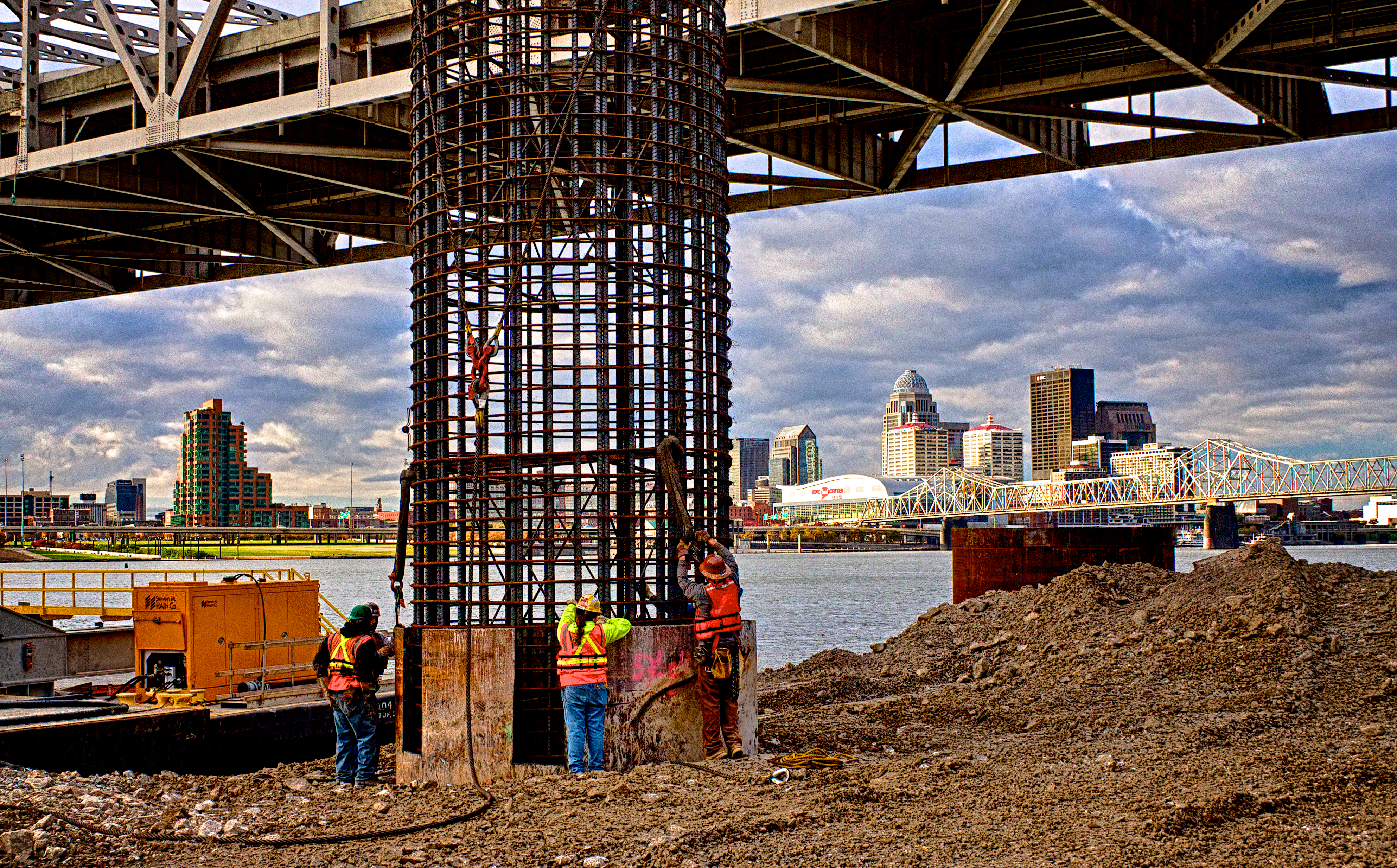Today’s post is a gallery of photos of some of the men and women of the Ohio River Bridges Project. As I go around the Ohio River Bridges Project I meet and talk with so many fine men and women who perform the arduous work of Heavy Highway and Bridge Construction.
Watching them work is a real eyeopener to the skills and strength they must bring to their work. One thing that really strikes home with me is how little complaining I hear. Everyone of them seems genuinely happy to be a part of such a historic project; many of them comment about the pride they feel to be involved. The work they are doing will change the face of Louisville and forever be a testament to their labors. I’m very fortunate to be able to share this historic project with them and thank each and every one of them for the kindness they show me as I go about my work too.
Click on any image to open a slideshow of today’s images.










































